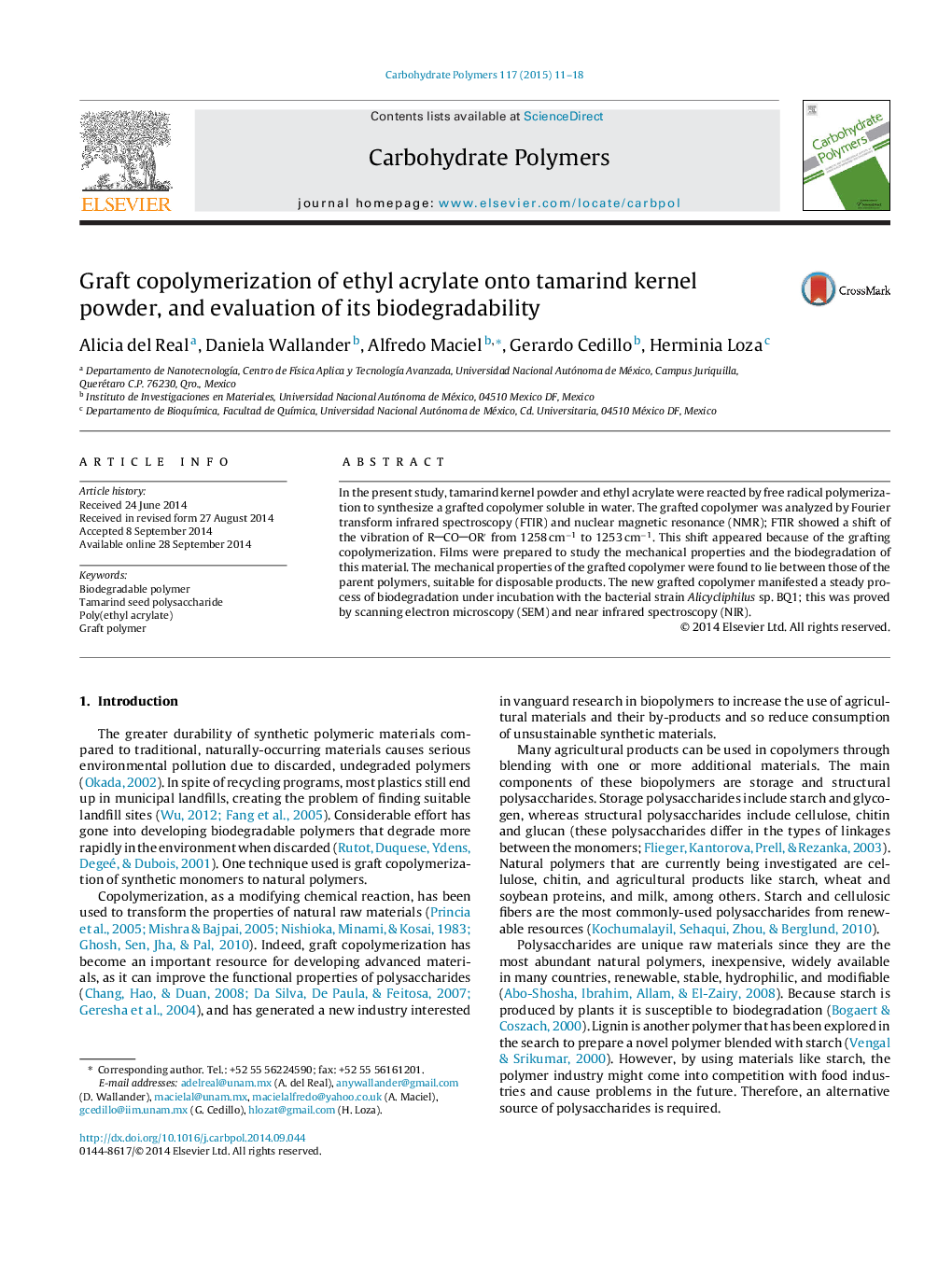| Article ID | Journal | Published Year | Pages | File Type |
|---|---|---|---|---|
| 7789413 | Carbohydrate Polymers | 2015 | 8 Pages |
Abstract
In the present study, tamarind kernel powder and ethyl acrylate were reacted by free radical polymerization to synthesize a grafted copolymer soluble in water. The grafted copolymer was analyzed by Fourier transform infrared spectroscopy (FTIR) and nuclear magnetic resonance (NMR); FTIR showed a shift of the vibration of RCOORâ² from 1258Â cmâ1 to 1253Â cmâ1. This shift appeared because of the grafting copolymerization. Films were prepared to study the mechanical properties and the biodegradation of this material. The mechanical properties of the grafted copolymer were found to lie between those of the parent polymers, suitable for disposable products. The new grafted copolymer manifested a steady process of biodegradation under incubation with the bacterial strain Alicycliphilus sp. BQ1; this was proved by scanning electron microscopy (SEM) and near infrared spectroscopy (NIR).
Related Topics
Physical Sciences and Engineering
Chemistry
Organic Chemistry
Authors
Alicia del Real, Daniela Wallander, Alfredo Maciel, Gerardo Cedillo, Herminia Loza,
